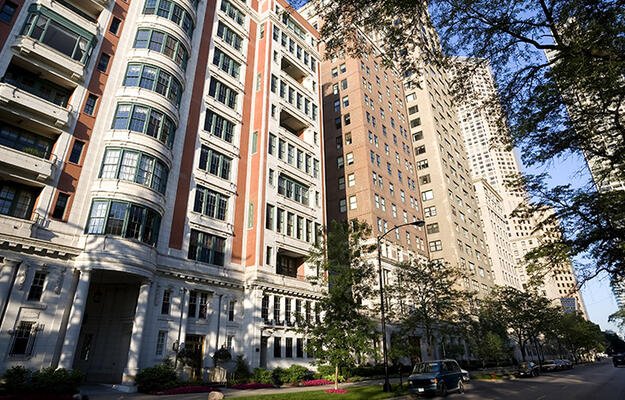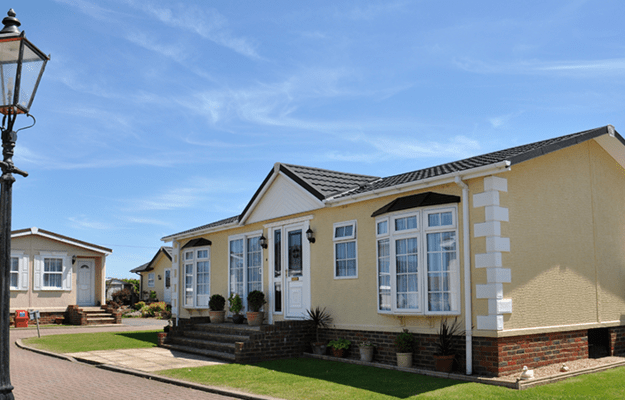
(SeventyFour/Shutterstock)
Financing Home Renovation Just Got Easier—but There Is Still Work to Be Done
In today’s tight housing market, families with low incomes are struggling more than ever to attain homeownership. The Federal Housing Administration’s (FHA’s) 203(k) program was created to help—but until recently, it wasn’t particularly borrower or lender friendly. Last month, the US Department of Housing and Urban Development (HUD) announced long-awaited updates to the program’s policies. We explore these changes, the motivations behind them, and the work that remains to be done to improve the program’s reach.
What is the 203(k) program?
The 203(k) program is a government-backed mortgage created to encourage households with lower incomes who may not qualify for a standard mortgage to buy homes that need repair, for which homeowners often have a hard time getting traditional financing, and upgrade them. Part of the motivation for the creation of the 203(k) program was to finance individual homebuyers to upgrade neighborhoods with blighted homes—often neighborhoods that had experienced extreme historical disinvestment. And because of structural barriers, households of color are most likely to have low incomes, making the program a tool for reducing the racial homeownership gap.
For many households, particularly lower-income ones who live in, or can only afford to buy, homes of the lowest values, the 203(k) program is one of the few ways to access rehabilitation loan capital. Homeowners often opt for cash-out refinancing or home equity lines of credit to finance home renovations, but these aren’t options for buyers of homes that need repair, as these vehicles are capped at 80 percent of the home’s value before repairs. Moreover, home equity lines of credit usually require very high credit scores. Borrowers whose homes require extensive repairs need a program that allows for the loan amount to be based on the after-repair market value of the home, as the repairs will raise the value of the home.
The FHA 203(k) program was created to fill this very need. But for years, very few loans—have been made through the 203(k) program; this represents less than 1 percent of FHA’s origination activity. This is because the program is both cumbersome for the borrowers and costly for the lenders, many of whom have decided not to originate 203(k) loans.
The problems with the original 203(k) program
There are two types of the FHA 203(k) program, a limited and a standard. Through the limited type, borrowers can access a loan, with a maximum total repair cost, for minor remodeling or nonstructural repairs. The standard program has no limit on repair costs beyond FHA loan limits, but it requires a HUD consultant to oversee the process.
However, the FHA is not a lender. They insure the 203(k) loans, but borrowers need to find lenders that will originate these loans to access the capital. And while the FHA’s updates provide significant upside for borrowers, the reality is that very few lenders currently originate 203(k) mortgages. This is because the process is cumbersome; the borrower must find a contractor and the lender must find a HUD-approved consultant to check feasibility of repairs and cost estimates. Following this, a project plan and a schedule of fund disbursements must be created, and then the property must be appraised based on its after-repair market value. This is all before the actual approval of the financing.
The lender is not only responsible for disbursing the money, but they must also schedule the HUD consultant to return to do an inspection before each disbursement. These HUD consultants are in high demand, but there are very few of them. Although the limited program doesn’t require these same steps, it hasn’t worked for borrowers who need more funds or to complete structural repairs. And though borrowers in the limited program are welcome to use HUD consultants, who are experts on the renovation process, they haven’t been able to finance consultant fees.
The FHA recently announced significant changes to address the major pain points of the program, including addressing the limited program’s loan amount, and technical changes regarding timelines and financing of consultant fees that can go further to help borrowers access this pathway to access rehabilitation loan capital.
What are the changes?
The changes announced in July 2024 are likely to improve the program’s usefulness and accessibility for the homeowners most in need of renovation capital:
HUD increased the maximum rehabilitation cost allowed under the limited option from $35,000 to $75,000 and introduced an annual review process for updating the maximum. They also enhanced the usability of the limited program for more significant repairs by extending the total number of days borrowers can be unable to occupy the property from 15 to 30.
This is a huge change that will enable access to loan capital for many more homeowners. Before this, the cap on the limited program hadn’t been changed since 2009, when construction and labor costs were significantly lower than they are today.
HUD extended the rehabilitation period for both the limited and the standard program to 9 months and 12 months (up from 6 months in both programs), and increased the permissible mortgage payment reserve period under the standard program from 6 to 12 months, to sync with the extended rehabilitation program. This is a reserve to cover mortgage payments during the period when the property cannot be occupied because of rehabilitation, and it can be financed into the loan.
This change makes the program more usable for homebuyers and homeowners, as many significant repairs may take months from start to finish, and even limited repairs may require occupants to stay elsewhere temporarily for their safety and comfort.
HUD allowed for the financing of consultant fees under the limited program and revised the consultant fee schedule, which hadn’t been changed since 1995.
HUD consultants, who prepare work write-ups and estimates and inspect the project before draws during renovation, were already required for the standard program and could already be financed into the loan. But FHA-approved 203(k) consultants are in short supply, in large part because of low compensation. The revised fee schedule is intended to help attract more qualified consultants. The changes also allow consultant fees to be financed for the limited program, which may encourage more borrowers to use consultants and ensure a quality rehab.
What more could be done?
The evidence suggests these changes will help more households access the program, but more can be done to better appeal to lenders and HUD consultants. It remains to be seen if additional actions will be necessary to entice more lenders and HUD consultants, but HUD must continue to evaluate.
Within the confines of the current program structure, HUD could make a few more minimal changes if they do not see the volume increases that they expect.
- If the new fee schedule is insufficient to address the shortage of HUD consultants, HUD could introduce new rulemaking to allow for a third-party inspector to step in if a HUD consultant is unavailable before the construction or the disbursement of funds.
- If lenders don’t respond to the increased demand for this product by building the in-house expertise to support this product, HUD could raise the allowable fees on origination. Right now, the allowable fee on a 203(k) loan is 1.5 percent, while a traditional purchase or refinance loan has a maximum of 1 percent. But 203(k) loans remain significantly more labor intensive and expensive to originate and service, so the 0.5 percent may not be enough to attract lenders. (Many lenders who offer the product also charge a higher interest rate to offset costs.) HUD could evaluate whether these changes are necessary as they evaluate the changes that have already been made.
Should we think bigger?
Some of the biggest challenges in renovation financing—for FHA 203(k) borrowers and others—may not be tackled by these changes. Fundamental issues, like uncertainty and a lack of knowledge on how to judge which repairs are cost-effective, have long plagued borrowers and lenders alike, contributing to high denial rates on renovation loans. This is problematic for individual homebuyers and homeowners and for neighborhoods, as sellers may lean toward institutional investors that have capital on hand not only for purchase but also necessary renovations. The ultimate solution to these problems cannot be found through programmatic tweaks.
HUD could contract with several local preferred vendors who would scope out the work and give borrowers a fixed price. When the buyer is contemplating a purchase and renovation or refinancing plus a renovation, the borrower could then go to the lender with the preferred vendor’s estimate and seek financing. More on this model is explored in the Urban Institute’s comment letter, but put simply, this would make the renovation process more turnkey for borrowers, less complicated for lenders, and better align risk and responsibility.
Certainly, this type of program overhaul would be difficult and would require significant resources from HUD. On the other hand, an entity like Fannie Mae, who already has a list of preferred vendors for their Real Estate Owned (REO) program, could implement a shift like this more easily, and then FHA could leverage their list, improving renovation financing outcomes for all borrowers, regardless of what type of loan they get and how knowledgeable they are about home renovations.
The bottom line
The 203(k) program changes HUD has made should be celebrated. HUD and the FHA listened to lenders and experts on the program’s issues. These changes, two of which were suggested by Urban Institute researchers in a comment letter, will enhance the program’s usefulness for homebuyers and owners and make it easier for households with no other options (who are more likely to have low incomes and be households of color) to access much-needed funding to make repairs.
With the US housing stock aging, it’s important to maximize the use of programs like 203(k), which can improve access to safe, healthy, and comfortable housing for all homeowners, not just those who can buy the newest homes or have broad access to many forms of capital for renovation. As the evidence of the success of the revamped program unfolds, there will likely be room for additional improvements.


